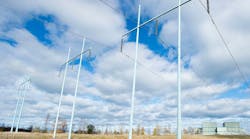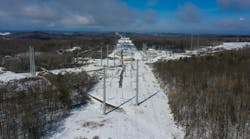Commercial HVDC was pioneered in the 1950s, starting with the 20-MW Gotland submarine-land project, based on mercury arc valves designed by Dr. Uno Lamm and built by ASEA in Sweden. Then, in the 1960s came a major evolution through General Electric's introduction of silicon-controlled rectifiers (now known as thyristors).
Through the seven decades of HVDC technology evolution, there was a long period of feast and famine for companies in the HVDC business. One or two orders could keep a supplier busy for three years, and then there may not be an order for a year or two. That sorted out the field, leaving three manufacturers left in global competition: ABB, Siemens and Alstom.
In recent years, HVDC business has increased well beyond expectations of most experts, and the three manufacturers are hard-pressed to keep up with demand. Well, what happened?
Expanding the Grid
Developing countries — particularly China, India and Brazil with sustained high-growth rate and fast growth in electric energy demand — have undertaken long overhead transmission lines from hydro and fossil energy sources and are expanding their systems with ultra-high-voltage (UHV) ac grid and UHV dc long-distance overhead lines and some HVDC back-to-back projects. Several ±800 kV, 6,000-MW projects and higher are under construction or in the planning process, and there seems no end in sight.
Europe has numerous HVDC projects, too, but for different reasons. European utility and energy companies, that can hardly expect new overhead transmission corridors, have taken on harnessing wind energy and diversity of hydro, wind, storage and other sources of energy with underground and underwater transmission. Most of these are HVDC because it only takes 40 miles to 50 miles (64 km to 80 km) of transmission length to make HVDC more economical, not to mention having control of power flow over an HVDC line. Europe has found it appropriate and economically viable to pay for underwater and underground HVDC cables to harness available energy sources. The cost of several hundred miles of undersea and underground dc cables including converters is still significantly less than cost of generation of any kind.
Recently, the HVDC technology also has evolved. Voltage source converter (VSC) technology enables the use of cables with no polarity reversal. This increases the dielectric cable's withstand strength to nearly twice the dc voltage, and solid dielectric cables, polypropylene-paper, have become attractive and economical for this application. There are other advantages of the recently evolved modular VSC technology, including no need for ac or dc filters, lower-cost transformers, black start and almost free leading or lagging reactive power as required up to 30% rating. Underground HVDC transmission does not require a prolonged permit process and may even enable shorter route to its destination. VSCs require semiconductor devices that have turn-off capability and presently use transistors, whose current and voltage capability is half that of thyristors. Therefore, with continued advancement, we should expect significant cost reductions in VSC-based HVDC technology. After six decades, HVDC technology feels like a new technology.
Connecting Wind
The United States needs a better regulatory environment, as well as regional and national transmission planning, if it is to harness vast renewable resources and could be using HVDC underground transmission for connecting large wind farms through the plains to load centers. But utilities are unwilling to use HVDC underground transmission, believing that underground is much more expensive than overhead transmission, even though it takes years and years to get permits to build overhead lines along viable corridors.
Interestingly, the California ISO determined a 40-mile HVDC submarine transmission through the San Francisco Bay was more economically viable than overhead line options for bringing 400 MW of power to San Francisco and was built by a private investor using Siemens technology. Close to approval stage is the Champlain Hudson Power Express, a 333-mile (536-km) HVDC cable project that will bring hydro power from Canada to New York City. The cable will be placed in waterways or buried along railway routes to minimize impact to local communities and the environment. Just ordered from Siemens-Prysmian is the Western HVDC Link, a 370-km (595-km), 2,200-MW, 600-kV submarine cable link from Scotland to Wales to harness wind generation.
Today, underground HVDC transmission including converters through plain fields and lakes will probably not cost much more than overhead ac transmission and, in many cases, will be small compared to the cost of generation. Let us give it a try to harness our clean energy sources.
Narain Hingorani is considered the father of flexible alternating current transmission systems (FACTS) and custom power innovations, and a leader in HVDC. After six years at Bonneville Power Administration and 20 years at EPRI, he retired to start consulting in the development of power electronics and devices.

